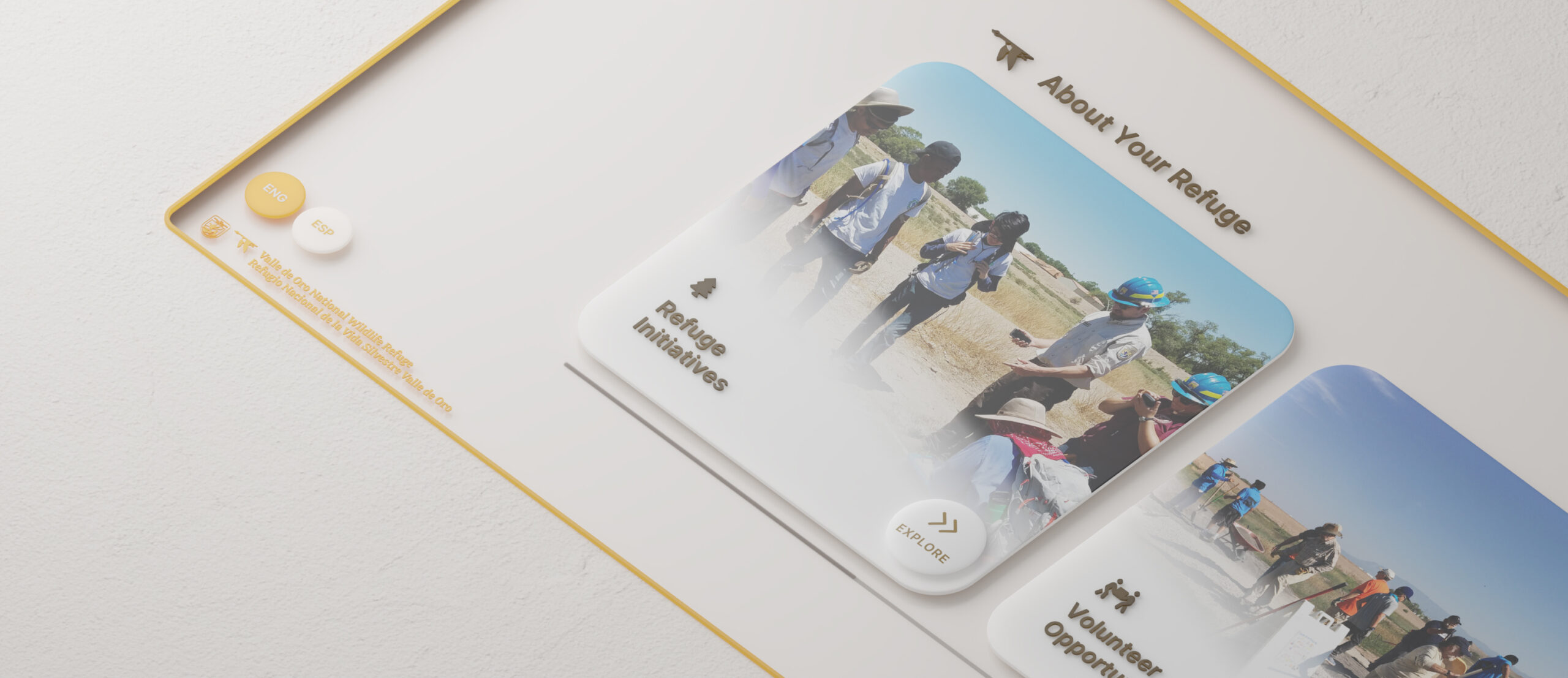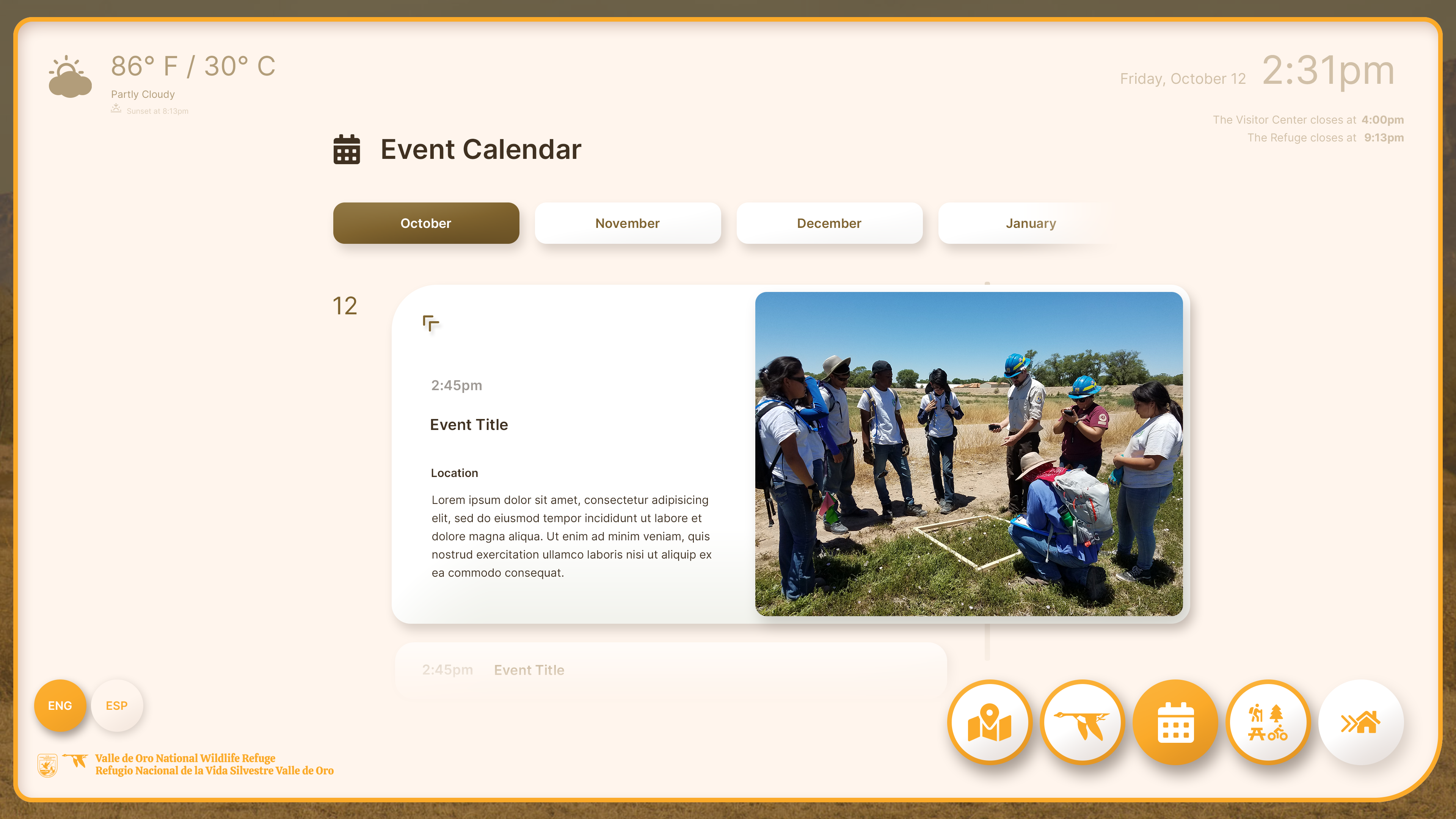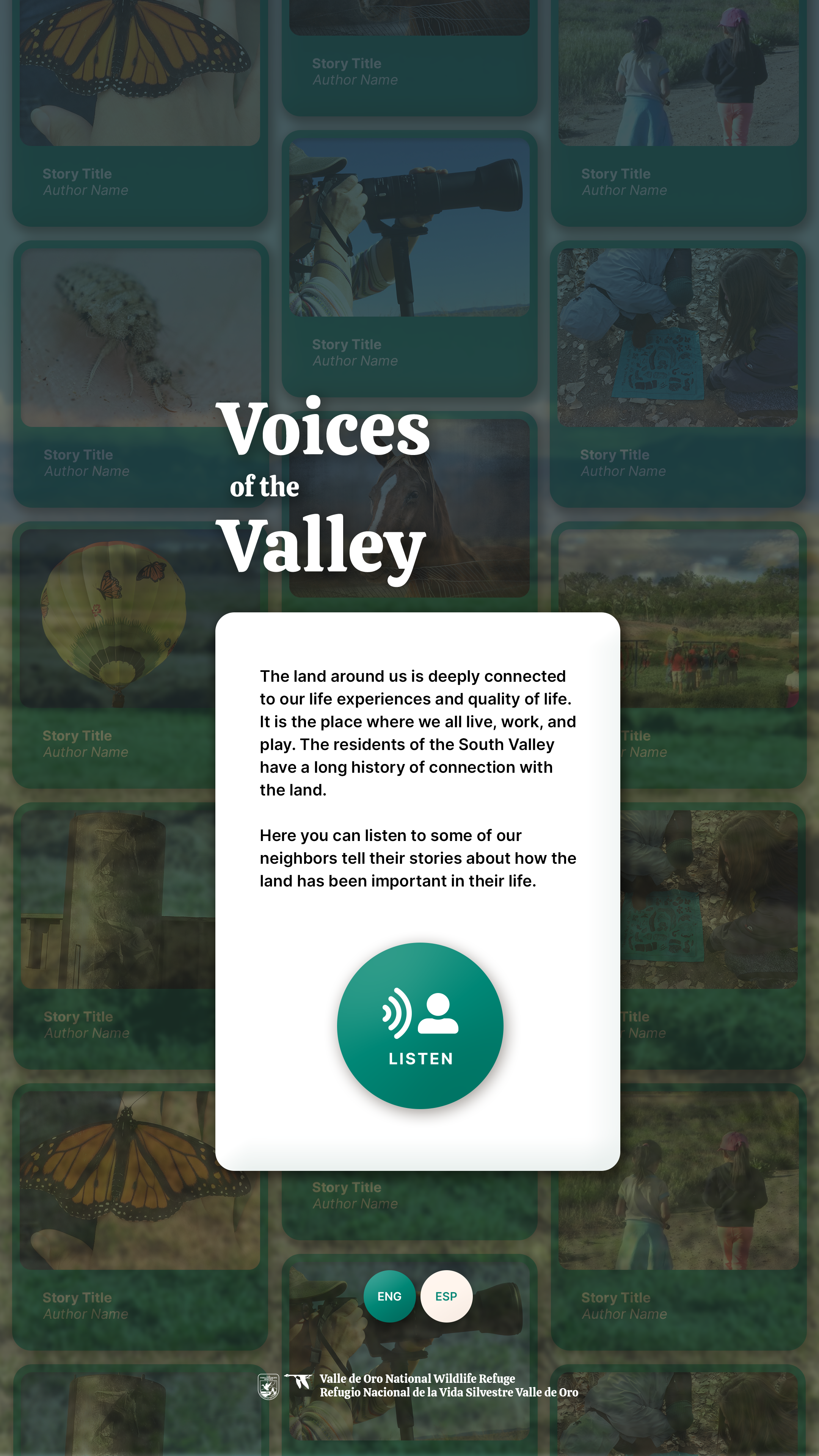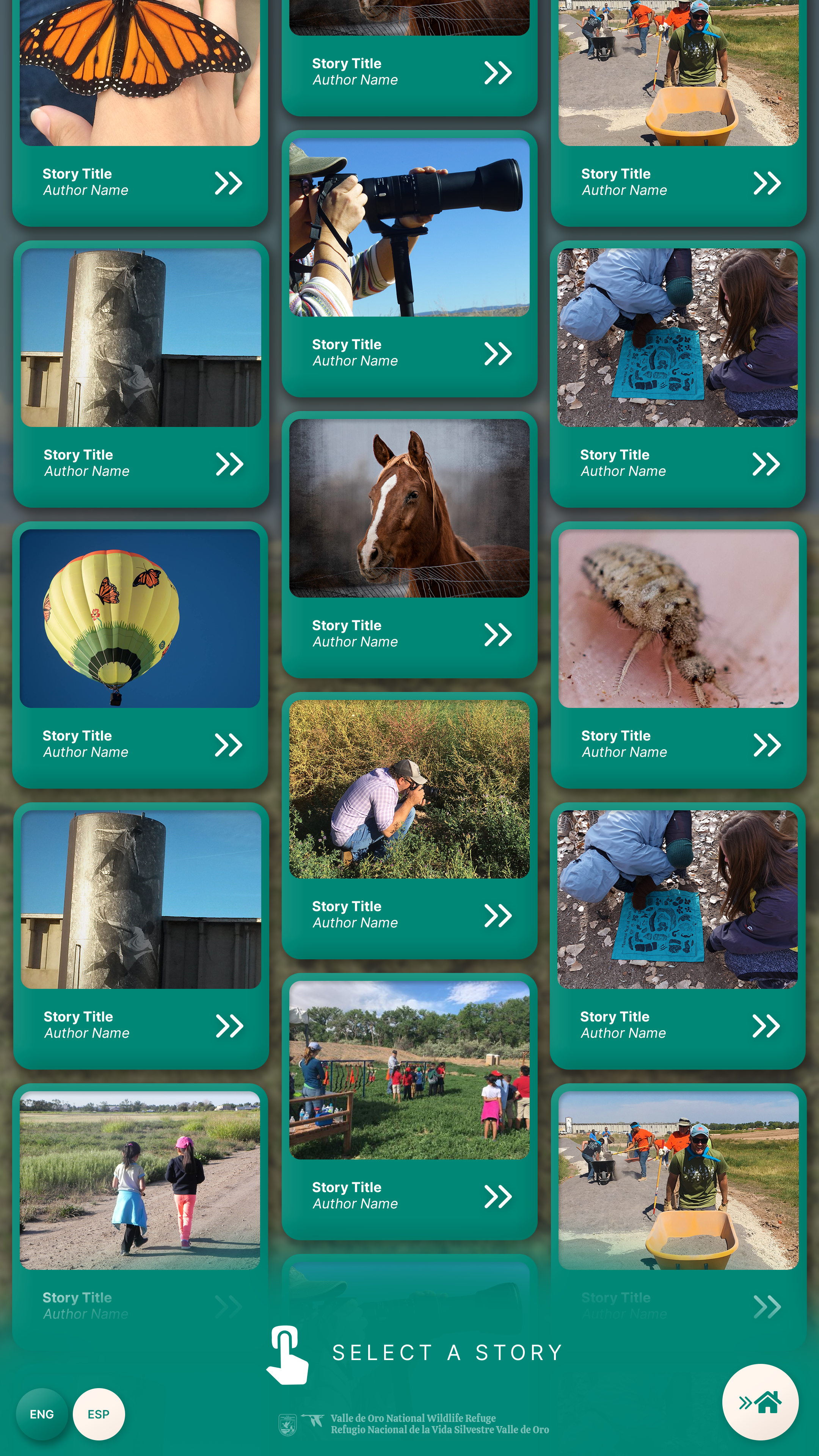Valle de Oro National Wildlife Refuge
Interactive Exhibit Applications
UX Design Lead
Location: Tiwa Ancestral Lands, Albuquerque, New Mexico
Time: 2019-2021
Overview
The South Valley of Albuquerque, New Mexico is a place full of stories. It is historically the ancestral lands of the indigenous Tiwa people who have called the south Rio Grande valley their home for hundreds of years, yet at the same time it is a place where a diverse set of peoples have settled and staked their claims to its resources. It is both a place of agricultural significance and natural beauty, but also industrial intrusion and environmental injustice. How these disparate elements have interacted over the years has yielded a broad palette of narratives from the people who live there, work there, and call it home.
The Price family’s dairy farm had been a local landmark since the early 20th century, and when the local community had an opportunity to repurpose the wide swath of acreage that made up the farm, they chose to designate it an Urban Wildlife Refuge under the management and conservational practices of US Fish and Wildlife Service. I had the great privilege to work with the local community, USFWS, and the architect of their stunning visitor center in creating exhibitry within the center that would tell the story and history of the land, and educate visitors on the many flora and fauna that call the South Valley home.
One of the first understandings we had of the client’s intent was that the visitor center should serve the dual purpose of educational hub and community center. The building would serve both the local community as a melting pot for education, art, storytelling, and meditation, and also edify visitors from outside the community about the ecosystems of the South Valley, both human and non-human. The digital exhibits would thus complement this environment, rather than take center stage, and two applications in particular served this purpose of making visitors feel at home and connected at the refuge.
Digital Docent
The first application was a “Digital Docent” that operated on two wall-mount 4K touchscreens placed strategically within the visitor center. This was an approachable, bilingual digital dashboard where visitors, in lieu of the usual barrage of graphic panels and brochures, could quickly and easily absorb both perennial and changing information about the refuge. Functionality included an events calendar, an “about” section, an interactive refuge map, and an interactive map of the local community showing routes, public transport, neighboring parks and recreation, as well as access points. Persistent throughout these modes would be current weather, sun location, time, and operating hours widgets.
The application was maintainable by refuge staff via a backend CMS where they could easily update events in the calendar, add new media to the about section, and alter any static data such as operating hours. The maps were hooked to public APIs such as iNaturalist and eBird to receive realtime bird sighting data, programs in which visitors were encouraged to participate.
Voices of the Valley
To bring a local culture steeped in oral tradition and spoken word to life, “Voices of the Valley” was conceived as an audio-centric exhibit where visitors can listen to stories by local community members told in their own voice. Visitors browse through a curated list of anecdotes from people of the South Valley which all relate a facet of life in the 500-year old community surrounding the refuge. Twin headsets allow two visitors to listen at once, and full bilingual transcriptions allows broad accessibility.
(c) 2025 Joseph Donovan Design










